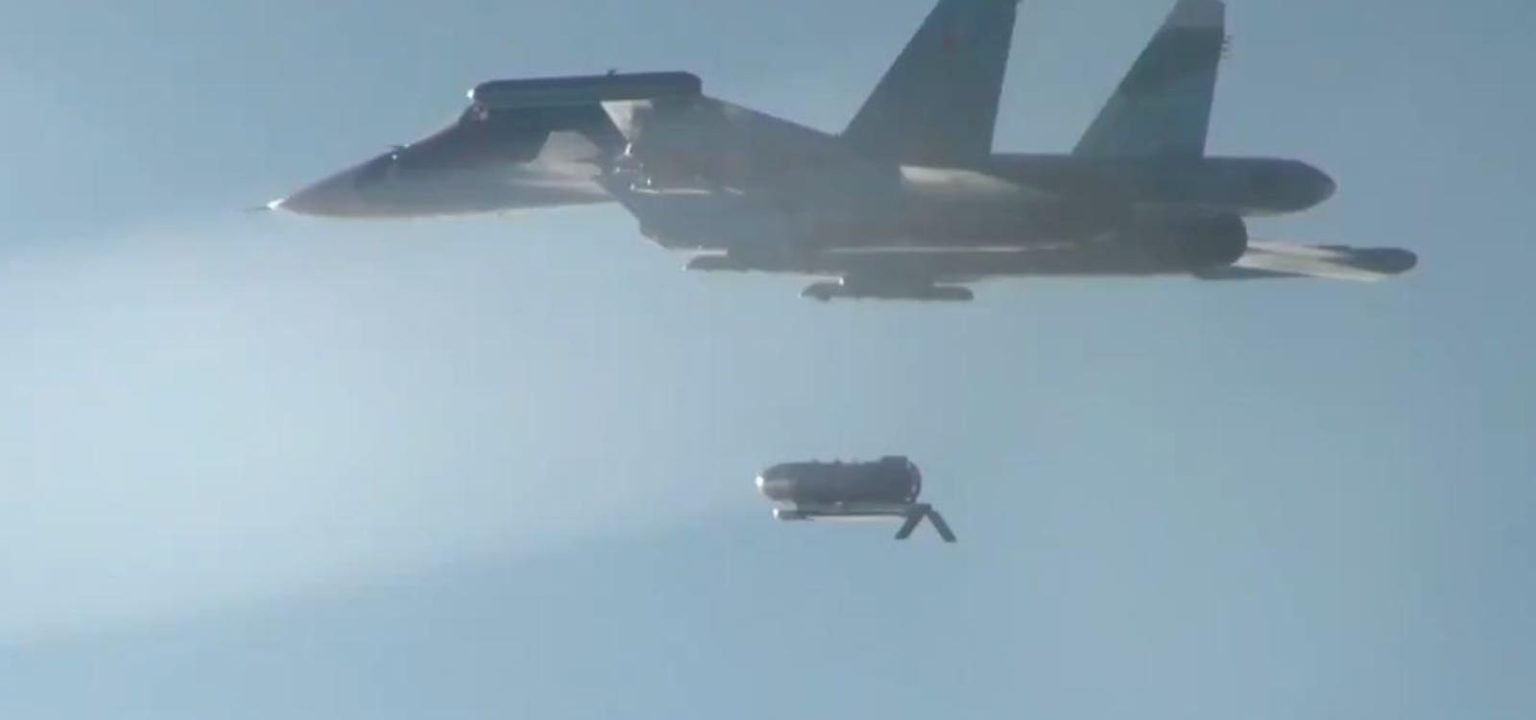As the Ukrainian invasion of Russia grinds into its fifth day, Ukrainian troops have advanced as far as 10 miles into Kursk Oblast—and are beginning to mop up any Russian troops they bypassed in their hurry to extend their zone of control.
The Russians, meanwhile, are finally bringing to bear their heaviest firepower—lobbing powerful glide bombs at Ukrainian columns rolling along Russian roads.
For more than a year, these glide bombs—each ranging 25 miles or farther with hundreds of pounds of explosives—have been Russia’s most powerful offensive weapons, demolishing Ukrainian defenses ahead of Russian ground assaults.
Now they’re defensive weapons—and potentially Russia’s main means of slowing Ukrainian assaults until fresh Russian ground troops arrive in Kursk.
Russian air force Sukhoi Su-34 fighter-bombers drop as many as 100 KAB glide bombs every day. Until this week they mostly dropped them along the front line in eastern Ukraine, where Russian regiments have been advancing—slowly and at great cost—all spring and summer.
The bombing campaign began shifting north around Tuesday, roughly the same time the vanguard of at least five Ukrainian brigades rolled across the border into Kursk, kicking off a surprise counter-invasion in the 29th month of Russia’s wider war on Ukraine.
As Ukrainian battalions attacked from their bases in Sumy Oblast, right across the border from Kursk, Russian bombs rained down. “The intensity of combat in the Sumy direction has increased,” the Ukrainian general staff reported on Wednesday. “The enemy is actively applying aviation, helicopters, heavy weapons.”
“There is a noticeable shift in the focus of the enemy’s aviation efforts in the theater of operations,” the Ukrainian Center for Defense Strategies noted. “Up to 50 percent of all guided bomb strikes … now target the territories of Kursk and Sumy Oblasts.”
Anticipating this development, the Ukrainian military deployed what one Russian blogger characterized as “a significant amount” of air-defense batteries as well as electronic jammers that can block radio signals and, in some cases, even throw off satellite-guided bombs.
With a big assist from explosive drones, the Ukrainian batteries shot down several Russian helicopters. Firing back, Russian artillery damaged one Ukrainian BUK air-defense vehicle.
The bombing of Sumy didn’t stop Ukrainian troops from marching into neighboring Kursk and capturing several towns including most Sudzha, so far the locus of the Ukrainian counteroffensive. The Russian army mobilized reinforcements, but Ukrainian rockets blocked some of them from reaching the front line in Kursk.
So the Russian fighter-bombers shifted their aim points to Russian soil. On Thursday, KABs struck Ukrainian vehicles in the Russian village of Darino, on the northern edge of the Ukrainian advance. On Friday, glide bombs pummeled Ukrainian troops in Leonidovo, not far from Darino.
Russian glide bombs, some weighing as much as three tons, are powerful but inaccurate—and pose a serious danger to any civilians around a target. Assuming, of course, the civilians themselves aren’t the target.
The Kremlin might not mind accidentally killing Ukrainian civilians, but it’s apparently less eager to kill Russians. As the bombing or Kursk intensifies, authorities have ordered an evacuation of the oblast.
It’s an ominous development for the Ukrainian invasion corps. With civilians out of the way, the Russians can bomb with abandon.
Sources:
1. Ukrainian general staff: https://www.facebook.com/GeneralStaff.ua/posts/pfbid02sk577Ehqgwvjgnc51TsYqXKA5fj2R4NZSCMf94ZKmFuXLmokirxj1q6xRsYL582Al
2. Center for Defense Strategies: https://cdsdailybrief.substack.com/p/russias-war-on-ukraine-100824
3. War Translated: https://x.com/wartranslated/status/1821084230325301650
4. Two Majors: https://t.me/dva_majors/49245
5. Vosintt: https://x.com/vosintt/status/1821491130225115533
Read the full article here





